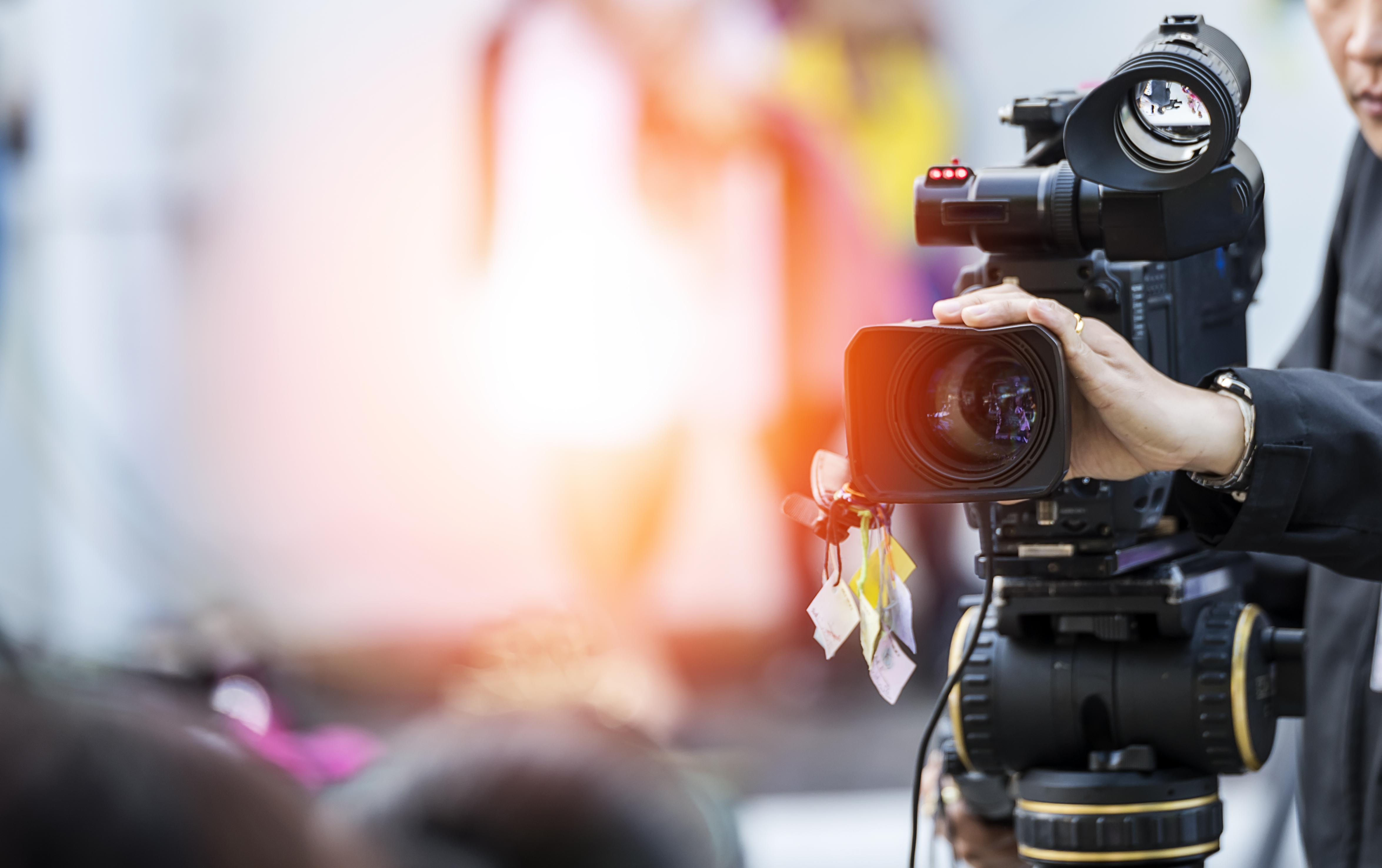Sections
5 Day-Of Tips for Preparing a Video Shoot
Whether it’s a testimonial or a commercial, you won’t see a successful brand video that hasn’t been planned out well in advance. It just doesn’t happen.
So much of video production comes down to preparation. Pre-planning is the best way to ensure your video comes out looking the way you and your client want it—on time and on budget.
Without planning, you’ll be stuck with lost opportunities, reshoots that eat into your team’s time and budget, and a video that no one’s thrilled with.
We’ve written before about how to prep your video strategy in the months to weeks leading up to your shoot. Today, we’re focusing on the day of. These are tips for what to pack, how to maximize your time, and how to create a video that looks spectacular. They’re all based on the video shoot process we follow here at Your Marketing People for our own clients (and for our own company videos). Let’s dig in.
1. Create a play-by-play shot list.
Once your client signs off on the storyboard, create a play-by-play shot list that brings that storyboard to life.
Include shooting details, such as whether you’ll be using an aerial shot or zooming in tight on the interviewee’s face. Provide time estimates for each shot, but leave plenty of buffer time. There has to be room for the unexpected, errors, and creativity! Finally, bracket your shot list with wiggle room for set up and tear down.

Ahead of your shoot, share this shot list with each member of your team, your client’s team, and anyone else who is involved. Hold a meeting to go over the shot list in case there’s something you missed, or a detail your client knows that you don’t. Schedule this meeting at least a few weeks ahead of your shoot. That gives you time to fix anything that comes up during the initial meeting, and to schedule a second approval meeting if needed.
Once you have the final approved shot list, stick to it. Of course, you should be prepared to be flexible and think on your feet when things change (because they will), but the more you can all stick to the plan, the better your chances of filming a video everyone agrees on.
Pro tip: This shot list meeting is a good time to send the final list of interview questions to any interviewees, giving them ample time ahead of the shoot day to prepare their answers.
2. Get your gear together.
Now that you have your shot list, it’s time to gather the gear you need to make it happen. Think through your full shot list. What lighting, lenses, cameras, sound equipment, and gimbals will you need?
For example, if you’re filming an interview, you’ll need both a lighting and sound setup, tripods, preferably two DSLR cameras, and two camera operators to capture two angles. These are the basics you’ll need for any interview video.
Then, zoom in on what you’ll need for each shot within the interview. Here are the questions you need to ask yourself:
- What lenses do you need? You’ll want at least one tight shot of your subject’s face. Either 70-200mm or 80mm lenses are good options for that. You’ll also want a wider angle to capture more of the scene. We recommend a 50mm or 28-70mm lens.
- What microphones? A Lavalier mic works great for most interviews. However, a boom mic positioned above the interviewee tends to provide the best sound quality. Either way, choose a quiet environment so you pick up your interviewee’s voice, not the background noise.
- What kind of lighting setup? Interview shots are more pleasing when you have one side with less space than the other—and the light comes from the side with more space. If you’re on a budget, you can always use natural light, by shooting into the shadows or having the sun come from behind your subject. If you can afford it, invest in LED lights with soft boxes for the best results.
- Don’t forget about B-roll. You’ll need a gimbal for your DSLR to capture movement, or a stabilized camera, such as a DJI Osmo. We like to set the camera to 60 fps so we have the option to slow down the footage in post-production if needed.
3. Gather your crew.
As you went through your shot list, you probably realized you’re going to need multiple hands to manage all the gear. Besides the film crew, we recommend having at least a second point person on set.
Ideally, this person should complement your skills. If you’re handling the overall vision and the client coordination, that team member should be an expert on the technical side. This way, they can adjust the lighting or angles while you coach the interviewee.

Once you have the finalized shot list, set up a meeting with your internal team. Discuss what each team member’s focus will be, whether it’s capturing movement shots, close up shots, wide angle, or running to get coffee. These responsibilities may change from scene to scene, but be sure to communicate clearly so you don’t miss a shot.
4. Create a gear checklist.
You’ll spend the week ahead of the shoot prepping the team and sourcing your gear. As you have these discussions, put together a checklist of all the items you’ll need on shoot day, along with the team member responsible for each item. Give each person a printed copy, and share it widely via text and email. Your list might include:
- Lenses and camera equipment
- Microphones
- Lighting equipment
- Extra batteries (these should be charged the day before) for all equipment
- Extra memory cards
- External batteries for your phone and anyone else who is on call for coordinating with clients
Assemble the gear from the checklist the night before the shoot. In the morning, walk through the checklist one more time before you leave for the shoot.
5. Manage your time during the shoot.
Even with all this planning, expect things to go a bit off schedule on the day of shooting. To help you maximize the time you have, here are a few more pro tips from our team:
- Prioritize the shot list. The shot list should indicate critical shots vs. the nice-to-haves. Make sure you film the must-haves first.
- Take your time setting up the interview. Often, setup takes longer than the interview itself. It’s essential that the interviewee looks and sounds professional, and that the footage is clear. So, take your time setting up, while the interviewee reviews the questions and mentally prepares themselves for being on camera.
- Coach your team on being efficient ahead of shoot. For instance, someone can be taking notes during the interview that might translate well to b-roll footage.
Plan for Video Success with Your Marketing People
A lot goes into planning a successful video. At Your Marketing People, we’re here to help with all aspects of your video, from the initial strategy to pre- and post-production. Take a look at our own promotional video and our video marketing work and contact us. Let’s develop videos that engage and convert your target audience.







